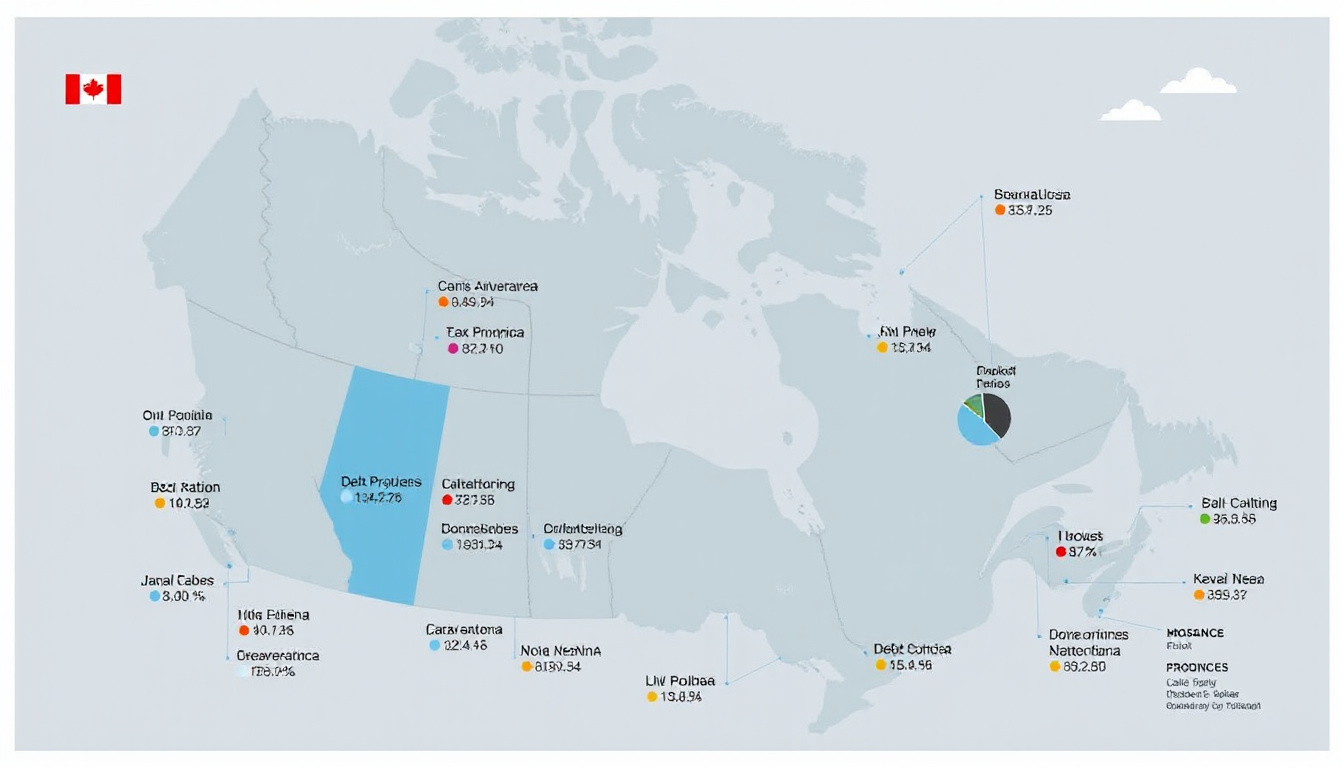As of 2023, the most indebted provinces in Canada are Newfoundland and Labrador, followed closely by Nova Scotia and Quebec, with debt-to-GDP ratios reaching
45.4%,
37.0%, and
36.4% respectively. This staggering financial burden highlights the ongoing struggles many Canadians face in managing debt amidst economic fluctuations and rising living costs. Understanding the financial landscape of these provinces is essential for addressing broader economic challenges, and this article will delve into the current debt statistics, explore the implications for these regions, and suggest strategies for effective debt management. According to Statistics Canada, the total provincial and territorial debt reached approximately $363 billion in 2022, setting the stage for a critical examination of debt management strategies and future outlooks. This analysis serves as a valuable resource for journalists seeking to report on financial issues affecting Canadians.

Key Takeaways
- Understanding debt is crucial for evaluating the financial health of Canadian provinces.
- Canada’s current economic landscape reveals significant debt disparities among its provinces.
- Detailed analysis identifies the provinces with the highest levels of debt and their contributing factors.
- Effective debt management strategies are essential for provinces to regain financial stability.
- The future outlook for indebted provinces hinges on implementing sound fiscal policies and economic growth initiatives.
Understanding Debt: What It Means for Provinces
When examining the financial landscape of Canada, it’s critical to highlight that as of 2023, Saskatchewan is known to be the most indebted province in Canada, with approximately 90% of households carrying some form of debt. This statistic underscores the strain that personal finances can impose on residents and the local economy. Other provinces such as British Columbia and Alberta follow closely, with household debt levels soaring to about 85% and 83% respectively according to recent data from Statistics Canada. The implications of high debt levels are significant, leading to increased financial stress and impacting consumer spending. Understanding the context of this debt is crucial, as it reflects broader economic challenges and housing affordability issues faced in these provinces, further reinforcing the need for effective debt relief solutions.
Current Financial Landscape in Canada
As of 2023, the most indebted provinces in Canada are Newfoundland and Labrador, with a staggering
47.4% of its provincial GDP, followed closely by Quebec at approximately
45.7%. This substantial debt load reflects a challenging financial landscape where government borrowing has surged in recent years to fund various programs and address deficits. According to Statistics Canada, these provinces have faced economic pressures that have necessitated increased spending, further exacerbating their debt situations. Trends show that while provinces like British Columbia and Ontario are also heavily indebted, they maintain lower debt-to-GDP ratios at around 27% and 38% respectively. This data highlights the growing concerns regarding financial sustainability in these provinces and can serve as a vital reference for journalists and bloggers covering debt issues in Canada.
‘The most serious problems of today’s governments are not income-related, but debt-related.’ – Anonymous

The Most Indebted Provinces: A Detailed Analysis
As of 2023, British Columbia holds the title for the most indebted province in Canada, with an average household debt of approximately $73,000. This figure significantly exceeds the national average, which hovers around $65,000 per household. Notably, Alberta and Ontario are close contenders, with average debts of $68,000 and $64,000, respectively. The increasing levels of debt in these provinces can be attributed to various factors including rising housing costs and consumer spending habits influenced by economic conditions. According to Statistics Canada, the total household debt in Canada reached a staggering $2.3 trillion in 2022, with these provinces significantly contributing to this total. Understanding the interplay of these figures is crucial for identifying the financial wellness of Canadian households and the broader implications for regional economic stability.
Strategies for Debt Management and Future Outlook
In 2023, the most indebted provinces in Canada are British Columbia, Alberta, and Ontario, with each province carrying an average debt-to-GDP ratio that is significantly above the national average. Specifically, British Columbia has reported a staggering debt-to-GDP ratio of approximately 36%, while Alberta follows closely at around 30%, and Ontario stands at 29%. This financial burden affects both the provincial governments and the residents, leading to tighter budgets and increased taxes in an attempt to manage debts. According to a recent report from the Canadian Institute of Chartered Accountants, these indebted provinces are struggling to balance budgetary concerns while investing in essential services. As the economic landscape evolves, with potential recessions and fluctuating interest rates, these provinces will need to strategize effectively to manage their debts and ensure economic stability for their residents. Sources of data include provincial finance ministries and reports from Statistics Canada that track debt levels and economic performance.
